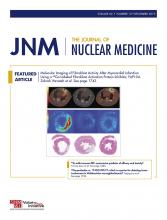REPLY: We thank the authors for the insightful comments on our study (1). We very much agree with the authors that bone metastases are preceded by bone marrow metastases and that both bone scintigraphy and 18F-NaF PET/CT indirectly visualize skeletal metastases via the osteoblastic reaction to metastatic deposits in the bone. However, we do not think an evaluation of the added value of 18F-NaF PET/CT in patients without bone metastases on bone scintigraphy is off-target. First, bone scintigraphy is the recommended method for assessment of bone metastases in prostate cancer across urologic and oncologic guidelines (2,3). This recommendation comes from decades of research showing the ability of bone scans to identify patients for curative and palliative treatments. Second, 18F-NaF PET/CT has replaced bone scintigraphy in many centers around the world for the evaluation of bone metastases in prostate cancer, probably mostly due to superior diagnostic accuracy and capacity. Thus, these methods are well-validated clinically.
Even though cancer cell targeting agents may, in theory, possess advantages over indirect imaging methods, there is a lack of clinical data in the literature showing the superiority of direct over indirect methods in prostate cancer. Radiolabeled PSMA, choline, and 18F-FDG possess the inherent advantage of depicting the tumor cells directly. However, 18F-FDG is obsolete in the staging of prostate cancer, and it is beyond the scope of this correspondence to discuss imaging in nonprostate cancer.
In comparison with choline PET/CT, 18F-NaF PET/CT has been shown to have premium diagnostic accuracy in prostate cancer (4,5). Moreover, every comparison of PSMA PET/CT and 18F-NaF PET/CT has consistently shown that 18F-NaF PET/CT is noninferior to PSMA PET/CT in terms of diagnostic accuracy for the detection of bone metastases in prostate cancer (5–9).
Our recent study showed that a bone scan is indeed a robust tool for evaluation of the skeletal system in patients with newly diagnosed, predominantly intermediate-risk prostate cancer undergoing radical prostatectomy; 18F-NaF-PET/CT did not identify any bone metastases missed by bone scintigraphy. Two years of follow-up among the 6 patients with biochemical failure after radical prostatectomy confirmed these findings; no bone metastases developed. Five of these patients underwent PSMA PET/CT, which was negative for bone marrow metastases.
While awaiting further clinical evidence for imaging methods of the bone marrow, bone scintigraphy, and 18F-NaF PET/CT remain potent tools in the diagnostic armamentarium in prostate cancer. The low cost, availability, and diagnostic performance of bone scan in prostate cancer emphasizes the guideline recommendation.
Footnotes
Published online Sep. 3, 2019.
- © 2019 by the Society of Nuclear Medicine and Molecular Imaging.







